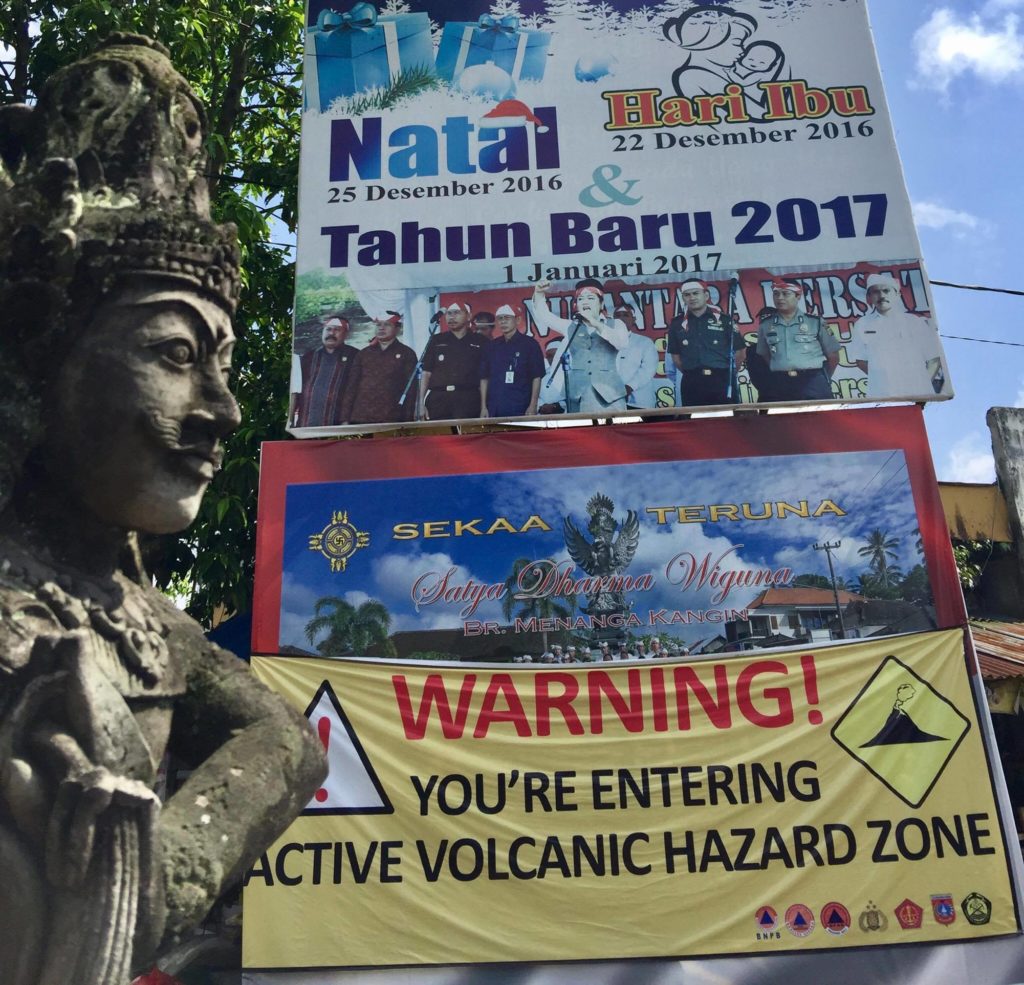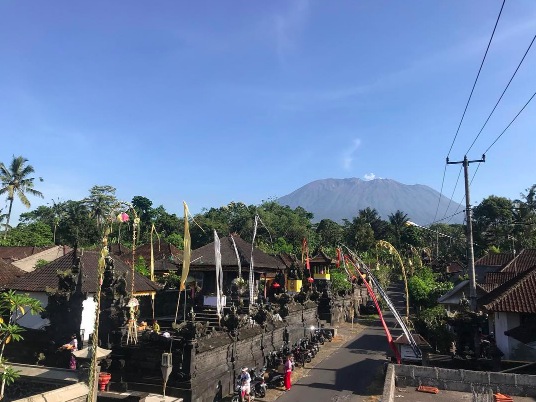Some evacuees from Mount Agung have returned to their villages in the danger zone to celebrate the Balinese Hindu feast holiday of Galungan which started Wednesday, Nov. 1, while others have chosen to stay far away from the volcano and remain in refugee posts to mark the ten-day festival.
Falling twice a year, every 210 days on the Balinese Saka calendar system, Galungan recognizes the victory of good (dharma) over evil (adharma) for ten days, concluding with Kuningan.
As tradition has it, Balinese go back to their hometowns to pass the holiday and although not a nation-wide tanggal merah (national office holiday), the feeling of Galungan in Bali is palpable. It’s a three-day island-wide facultative holiday so banks, schools, and office shut down, and Bali’s “Christmas tree,” penjor—tall bamboo poles decorated with coconut leaves—line the streets.
Though Mount Agung’s alert status was downgraded from level IV (danger), the highest level, to level III (standby) on Sunday, Balinese residents from six villages inside the new, reduced exclusion zone remain evacuated. The red zone had been nine to 12 kilometers from the crater, but the radius was cut down to a span of six to seven and a half kilometers when the alert level went down, allowing for thousands of evacuees to return home.

The volcano, located in Karangasem regency, about 75 kilometers from the tourist hub of Kuta, had been on level IV since Sept. 22, resulting in the estimated evacuation of more than 180,000 people.
“Prayers are being held at the family temple, the village temple, and other various temples,” Besakih Village resident Made Dwi, 30, told Antara on Wednesday.
The atmosphere feels different this Galungan for some, as many Besakih area residents stay in evacuation centers in Klungkung, the next regency to the south after Karangasem.
“Some people have returned home and stay in each other’s homes, but there are still many in the refugee camps because their neighborhoods are still in disaster prone spots,” Dwi said.
A photo posted to Instagram shows evacuees preparing the traditional Balinese dish of lawar, inside an evacuation center.
However, thousands of Balinese still went on this year to Pura Besakih, Bali’s “Mother Temple,” located in the danger zone on the slopes of Agung, as footage from Liputan 6 shows from Wednesday.
One resident of Sebudi Village, Nengah Pondoh, says his family would return home during the day to prepare for Galungan and pray, but would leave again at night, as their village is just four kilometers from the crater. Galungan requires much preparation between the food for feasting, penjor, and getting offerings ready.
“When night falls, we evacuate. We’re afraid to stay at home too long,” the 60-year-old said.
Bali Governor Made Mangku Pastika previously stated that evacuees from the red zone were permitted to enter and return to their respective villages for the sake of conducting Galungan prayers.
While Agung’s alert status for an eruption is no longer at the highest level, Indonesia’s volcanology center reminds the public that an eruption is still possible.




